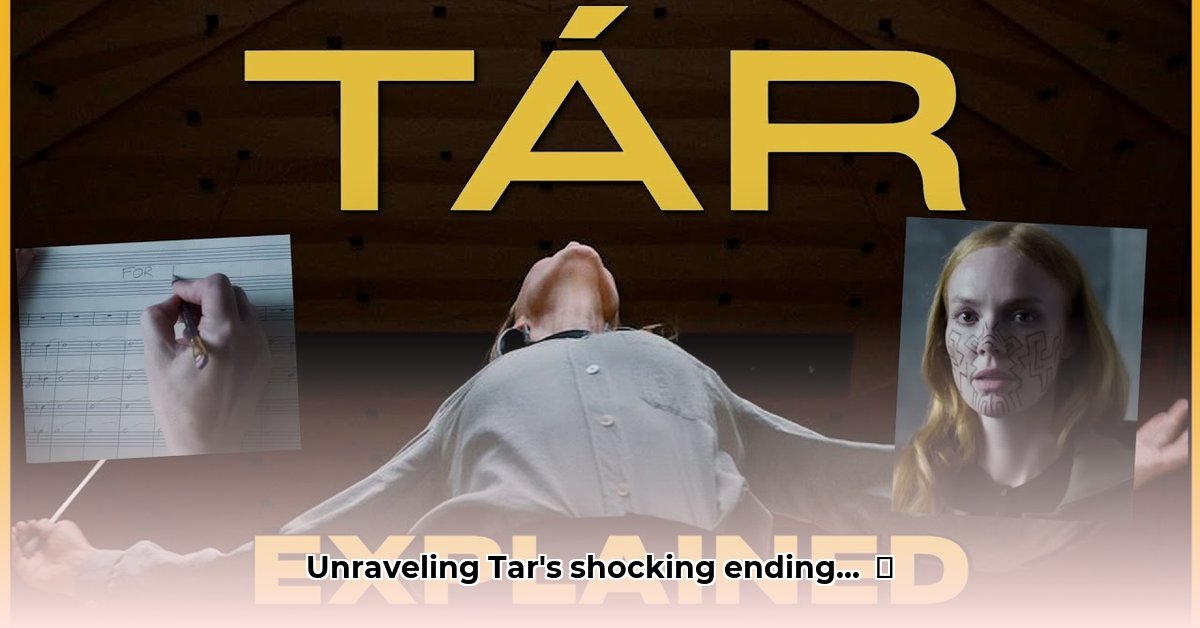
Tár Movie Explained: A Deep Dive into Ambiguity and Power
Todd Field’s Tár isn't just a film; it's a cinematic experience that demands active participation from the viewer. It's a psychological thriller, a study in power dynamics, and a potent exploration of ambition's corrosive effects. We witness Lydia Tár's ascent to the pinnacle of the classical music world, only to see her carefully constructed life crumble. But Tár's brilliance lies not in a simple narrative of a fall from grace, but in its intricate ambiguity, leaving audiences questioning the nature of reality, guilt, and the possibility of redemption. The film leaves us wrestling with its complexities long after the credits roll, prompting a deeper engagement with its themes. Is Lydia a victim of her own actions, a casualty of a flawed system, or something more ambiguous still? This is the core question Tár poses, a question that defies easy answers.
Lydia Tár's Downfall: More Than Meets the Eye
The film masterfully utilizes ambiguity, leaving us questioning whether Lydia's actions are products of a predatory nature or are symptomatic of a deeper psychological struggle. The events depicted in the film's latter half, especially the final scene in the Philippines, remain open to varied interpretations. Is this a descent into madness, a cruel trick of the mind, or a quiet acceptance of a drastically altered future? This deliberate ambiguity reflects the complexities of human nature and challenges simplistic narratives. The film refuses to offer easy answers, forcing us to grapple with the moral and psychological dilemmas it presents. How much responsibility should be shouldered by the individual, and how much by the system that enabled her actions?
This isn't just a film about a conductor; it's a commentary on power structures, the complexities of cancel culture, and the blurred lines between genius and monstrosity. The film’s power lies in its refusal to provide easy answers, forcing viewers to grapple with the uncomfortable truths it presents. Tár forces reflection on our own societal issues and how we respond to them.
Visual Storytelling and the Power of Ambiguity
Field’s direction is masterful. The cinematography subtly shifts throughout the film, mirroring Lydia's internal turmoil. The initially realistic, documentary-style approach evolves into something unsettling and dreamlike, reflecting her psychological disintegration. This masterful use of visual language adds another layer of complexity to the already ambiguous narrative. The film’s soundtrack also plays a crucial role, subtly shaping our understanding of Lydia's actions and their implications. The choice of Monster Hunter as her final piece, for instance, is anything but accidental, raising questions about victimhood and culpability.
Interpreting the Ending: A Multifaceted Enigma
The film's conclusion is a source of much debate. Some viewers interpret the final scene as a portrayal of Lydia's diminished status, finding work far removed from her past glory. Others see it as a symbolic representation of self-imposed exile, a delusion born from the weight of guilt and a crumbling mental state. The film deliberately leaves this crucial element ambiguous, encouraging diverse interpretations and fostering ongoing discussions. This deliberate ambiguity isn’t a weakness; it’s a deliberate choice that underscores the film's central theme: the inherent complexities involved in assigning blame and judging the potential for redemption.
Beyond the Narrative: Key Themes in Tár
Tár transcends the confines of a biographical drama. It tackles profound and often uncomfortable issues, forcing us to confront our own biases and prejudices in relation to power, accountability, and the dynamics of cancel culture. The film's lingering effect stems from its ability to provoke introspection and deep engagement with ethical dilemmas. It challenges our inherent assumptions about genius, morality, and the potential for redemption.
Does Lydia deserve a second chance? The film, cleverly, leaves this question unanswered, forcing us to engage with the complexity of her situation and the ambiguity of human nature itself.
Assessing the Risks: Lydia's Post-Collapse Future
Let's examine Lydia’s situation after her downfall using a risk assessment matrix:
| Risk Factor | Probability | Impact | Potential Mitigation Strategies |
|---|---|---|---|
| Public Backlash | Very High | Very High | Public apology, extensive rehabilitation initiatives |
| Legal Action | High | Very High | Strong legal representation, potential settlements |
| Career Ruin | Very High | High | Focusing on smaller-scale projects, carefully rebuilding reputation |
| Mental Health Deterioration | High | Very High | Intensive therapy, building strong support networks |
This framework illustrates the significant hurdles Lydia faces in navigating her post-scandal life. The film cleverly avoids offering simplistic solutions, forcing us to grapple with the profound ethical implications of her actions and their consequences.
Three Pivotal Points:
- Tár's ambiguity is deliberate, provoking continuous discussion and interpretation.
- The film deftly uses visual language and music to enhance its ambiguity and complexity.
- Tár provokes sustained reflection on societal issues surrounding justice, accountability, and redemption.
This in-depth analysis of Tár aims to provide a nuanced understanding of its complexities while avoiding simplistic answers. The film's enduring power stems from its open-ended nature, forcing us to confront uncomfortable truths and actively participate in interpreting its meaning, well beyond the final scene.